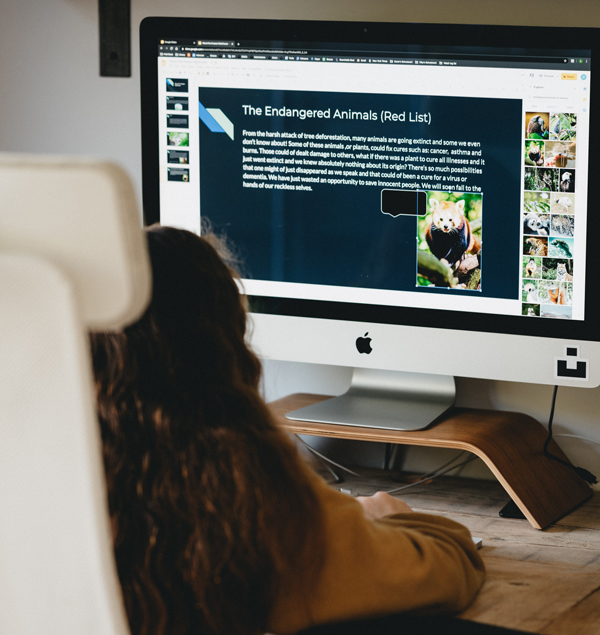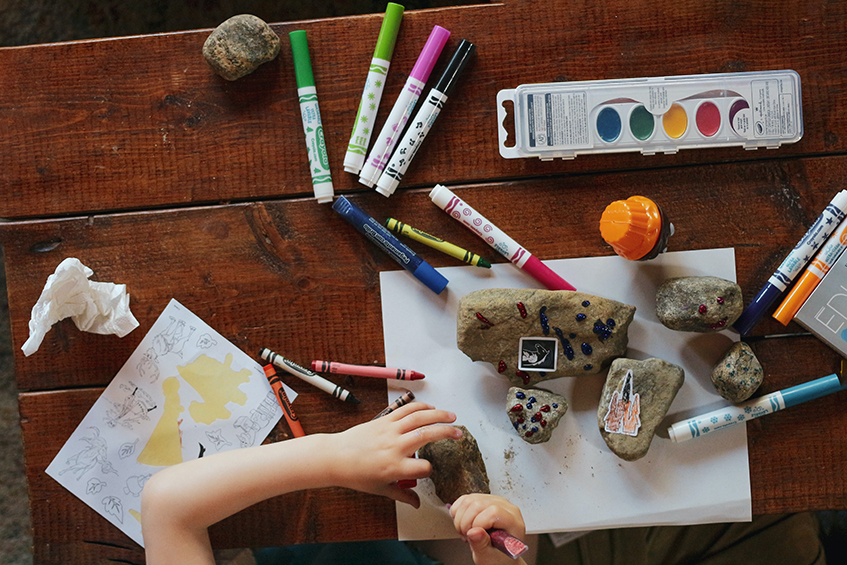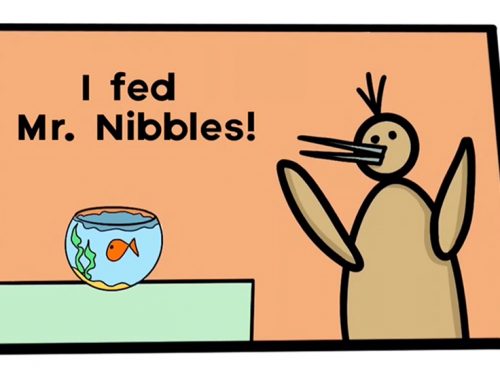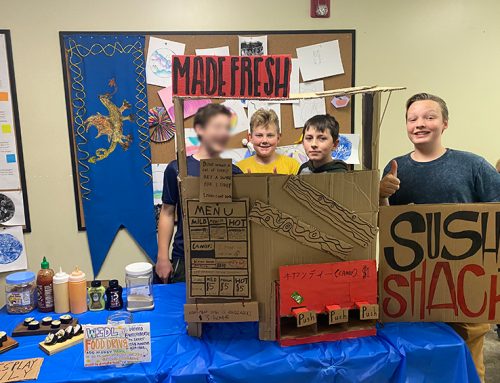I’m a big believer in the principle of momentum when it comes to kids, especially neurodiverse ones. And one thing Link Education League teachers and students excel at is creating enthusiasm over a topic or project. As a parent, I use that enthusiasm momentum to the fullest extent possible by piggy-backing our at-home learning onto it.
Of course, this won’t work for all families or students. Or during all terms. But the principle is simply to recognize when your student is excited and harness that natural motivation into other projects, especially ones that your student might not choose to do on their own. For example, my 8-year-old reluctant writer was more than willing to take on the challenge of making a poster about a book he was reading to present to his class because the book was just so good and he wanted to tell his classmates about it.
Here is a list of 10 different ways you can extend learning at home by using and building upon the enthusiasm at Link Education League.

1. Presentations or Students Teaching Students
Sometimes teachers assign these projects, but students are always welcome to present to their class the things they have worked on at home. And it honestly works better when it is student-led. During one term about the Pacific, a student did an at-home research project about a specific type of shark. He made a diorama of this shark’s habitat and brought it to school to teach his class. I then had half the class wanting to do habitat dioramas. So they researched at home, built them in class and at home and by Celebration the next week, we had four more complete, amazing dioramas. Students teaching students is such a powerful learning opportunity all around.
So how can you support this? Ask if there is anything they already know about the term (or other things) they want to share with their class. Contact the teacher and set a time. Ask them how they want to present it. Have them practice their presentation at home.

2. Food
This one is fun and memorable anyway you slice it. And it can be super easy. We all have to eat! You can order from a restaurant or just choose one meal a week that will be from the region of the term. You can just prepare it and offer it to your family. Or you can have your kids do research for you, have them cook, or just help. This is multitasking at its finest!
3. Family Read-Alouds
Reading books aloud with our kids has been hands down one of the most powerful and bonding things we do as a family. We still quote Chitty Chitty Bang Bang that we listened to during a long car ride 4 years ago! Even the 2 ½-year-old at the time remembers! If you already have this routine in your family culture, try adding in a book from the term we are studying. If a chapter book is too much of a commitment, there are always amazing, timeless picture books.
4. Family Movie Nights
Movie nights work especially well for exciting my older (and sometimes teenagery-resistant) kids. This is about as low prep as you can get but still packs a huge punch!
5. Multi-Disciplinary Tie-Ins
Whenever we start a new term, I look for how I can weave other subjects in. I find out (or have them do it) what mathematicians, scientists, engineers, artists, and/or leaders have come from the era or area. I have one student that will learn anything if she first learns about a person. So studying Indian mathematicians turns into studying math. Was this region of the world responsible for any major inventions or discoveries that impacted the world? Who, how, and why? What about art projects? Or music?

6. Book Lists
I have avid readers so each term we make a book list together of both fiction and non-fiction they are going to read during the term. For a term on Japan, I am including books about tsunamis, earthquakes, plate tectonics, and the like on their Science reading lists.
7. At Home Projects
As we begin learning together, I ask my kids if there is anything they want to work on at home. For example, I have a kid that will always do a textile project related to the term. I have another that will build anything out of popsicle sticks. If your student is struggling to get excited about the term, this can be the secret sauce to engaging them. One year, a student was very much not interested in learning about WWII. His mother bought him an airplane model kit of a Spitfire. She told me he actually rolled his eyes when she brought it home. She told him that he had to at least give it a try. And he ended up loving it! He learned a ton about planes, aeronautics, strategy, inventors, battles, pilots, etc. He brought his enthusiasm to class and we all learned with him.
8. Sharing with our Community
With all of these suggestions, I highly encourage your students to share them with their class. This is different from the first suggestion of presenting in class (but they can do that, too!). It can be very informal, they can hop onto Seesaw and post which movie you watched for family night. You can post about a great read-aloud on Facebook or email me. They can just tell their friends the old-fashioned way.
9. Magical Synergy
There is a magical synergy that happens when even just one student does any of the above. During the term on Medieval Europe, the enthusiasm and excitement when students brought in their shields (or costumes or weapons) that they had made at home was epic and inspiring to other students.
10. Expanding the Principle of Momentum to Other Areas
Finally, I want to point out that you can use the principle of momentum in other areas of your home-educating and parenting. Planning a vacation? Can each kid read a book about the destination and present it to the family? Sample food from the destination before going and learn about it. Or does your student have a specific interest they are passionate about? How can you help them teach the rest of your family about what they are interested in? Can you extend their interest in one thing to nearby areas? Or do you want to work on a large project together like building a playhouse, for example? Can you pull in multi-disciplinary studies here? My kids were eager to build a treehouse when they were in their Magic Treehouse book phase. In addition to doing a ton of practical math and engineering, we also used a lot of imagination and created a lot of childhood magical memories.
How have you been able to use the principle of momentum to extend learning in your home?





